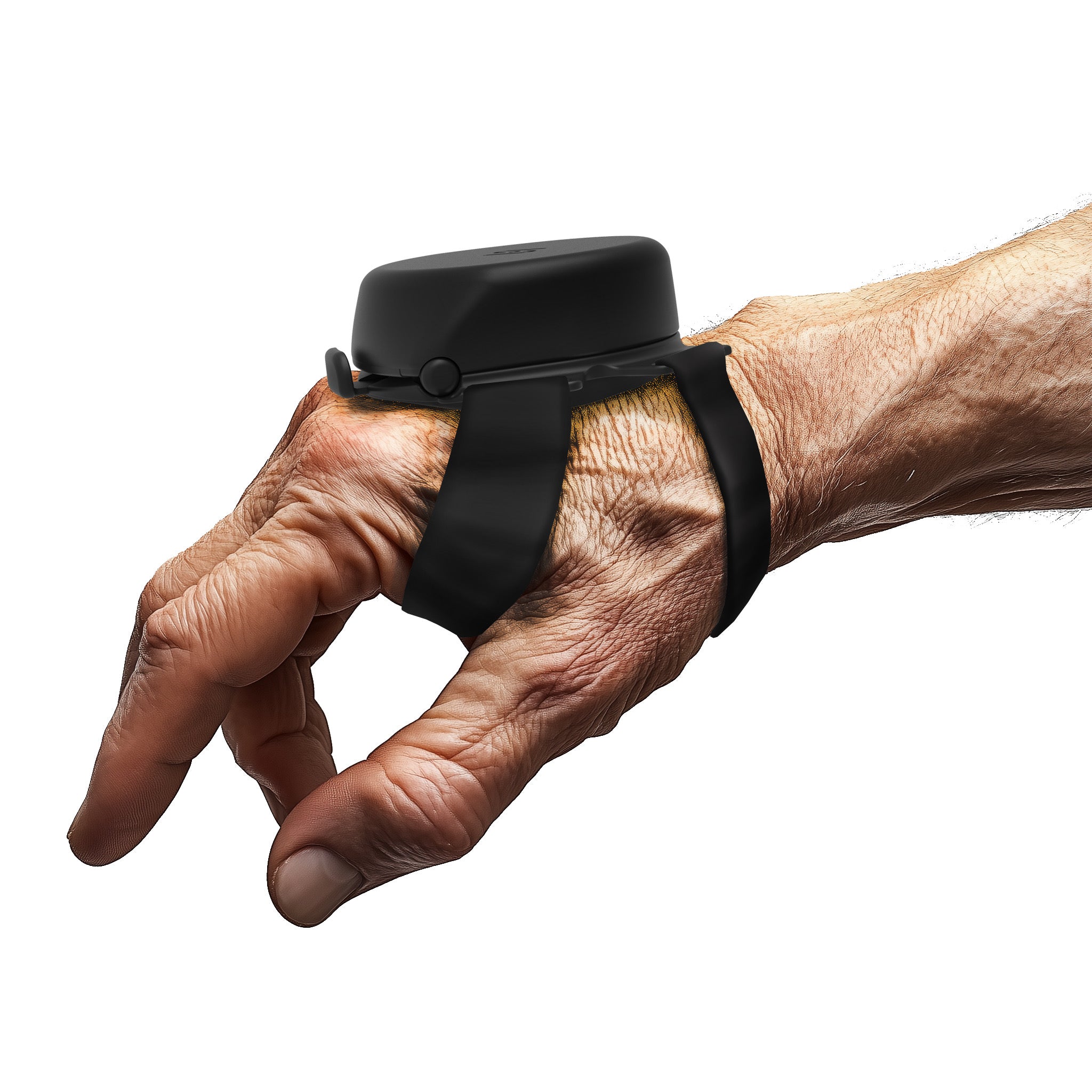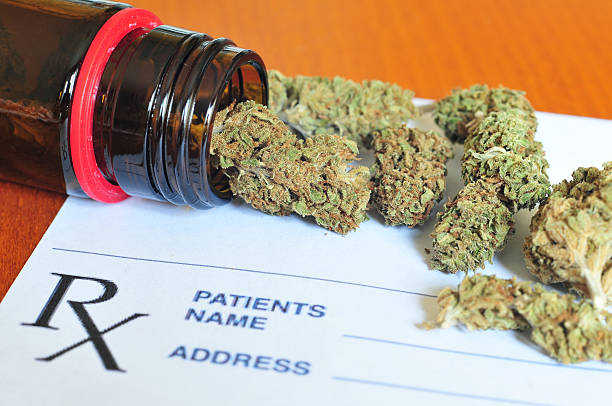Essential tremor is a well-known and common neurological condition characterized by involuntary, rhythmic shaking. ET most commonly affects the hands, but it can also affect the head, voice, and other parts of the body. While ET can occur at any age, it is most common in people aged 40 and older, and its prevalence increases significantly with age. While the exact cause of essential tremor is not fully understood, and while we haven't successfully found a cure, several essential tremor treatments exist, some of which have proven to be efficient enough to relieve the symptoms. So, in today's blog, we're taking a closer look at some of those essential tremor treatments to give you a better understanding of the current treatment options.
What Causes Essential Tremors?
Several factors come into play when trying to properly diagnose essential tremors, making it one of the tricker neurological conditions to pinpoint. Here are some of the factors doctors tend to consider when examining a patient:
Genetic Factors:
- Hereditary Component (Familial Tremor): Essential tremor disorder often runs in families, meaning that genetic factors can be a main contributor. It is inherited in an autosomal dominant pattern, meaning that if one of your parents has it, there is a 50% chance you'll also get it.
- Genetic Mutations: Even though the precise genes causing essential tremor disorder are still unknown, several potential genes are being studied. However, ET may occur as a result of gene mutations affecting the body's neuronal transmission and function.
Neurochemical Abnormalities:
- Dysfunction in GABAergic Pathways: Neurotransmitter gamma-aminobutyric acid (GABA) slows down nerve signals in the brain, which aids in controlling movement. Reduced GABA activity can cause the uncontrollable shaking associated with essential tremors. This phenomenon may be caused by problems with GABAergic pathways, particularly in the cerebellum.
- Dopamine Dysfunction: According to certain research, dopamine—an additional neurotransmitter involved in muscle control—may contribute to the onset of essential tremor disorder. However, in contrast to disorders like Parkinson's disease, the precise link between dopamine and ET is less defined.
Structural Changes in the Brain:
- Cerebellar Changes: Essential tremors are frequently associated with the cerebellum, the region of the brain responsible for controlling movement. It is believed that ET symptoms, such as shaking uncontrollably, are caused by functional and structural defects in the cerebellum and its links to other areas of the brain, including the thalamus and motor cortex.
- Thalamus Dysfunction: The thalamus is also an area of interest as it sends motor and sensory signals to the cerebral cortex. Thalamic changes that disrupt normal motor control can lead to tremors.
Age:
- Most Common in Older Adults: The majority of people diagnosed with essential tremor are 40 years of age and older, and the prevalence rises with age. Those over 60 are more likely to experience it.
- Onset in Childhood and Adolescence: Essential tremors can also start during infancy or teenage years, though it is less common. In these situations, it would definitely be familial, indicating a significant hereditary component.
The Current Essential Tremor Treatments:
While there isn't a cure for ET yet, fortunately, modern medicine can provide patients with essential tremor treatments and medications that at the very least can alleviate the symptoms, making patients' lives easier. Here are a few of the treatment options we have:

Essential Tremor Medication Options:
- Propranolol: In addition to being an excellent treatment for high blood pressure, this essential tremor medication also lessens the severity of tremors. When tremors worsen, propranolol can be used as needed; otherwise, it can be taken regularly for continuing control.
- Benzodiazepines: To lessen the intensity of the tremor and the anxiety that goes along with it, doctors may prescribe drugs like clonazepam or diazepam. These kinds of essential tremor medication choices are usually employed in cases where other medications are not working due to their potential for dependence and negative effects.
- Primidone: Primidone is a backup anticonvulsant medication that is often used when propranolol is not effective or suitable. Primidone can greatly lessen the severity of tremors by regulating brain activity. It's a crucial drug that gives people who might not respond well to propranolol an alternate course of treatment, giving those with tremors hope and some relief. Primidone's capacity to alter brain activity makes it an essential tool for treating tremors and enhancing many people's quality of life in general.
Focused Ultrasound Thalamotomy:
This essential tremors treatment is a non-invasive procedure that uses targeted ultrasound waves to make a lesion in the thalamus, which interferes with the irregular impulses that cause the tremor. Patients who would rather use a non-surgical method or who are not eligible for DBS have this option. Although it is usually applied to one side of the brain, it can significantly and permanently reduce tremors.
Deep Brain Stimulation (DBS):
DBS is a treatment for tremors that involves implanting electrodes in particular brain regions that are related to the control of movement, such as the thalamus. In order to cure tremors, deep brain stimulation (DBS) entails implanting electrodes in particular brain regions that are related to the control of movement, such as the thalamus. The electrical impulses delivered by these electrodes control the irregular brain activity that is responsible for the tremors. Patients who do not react to medicine and have severe tremors can benefit greatly from DBS. It can considerably lessen tremors and enhance one's quality of life. Since the stimulation can be changed externally, dealing with symptoms over time can be done with flexibility.
Physical and Occupational Therapy:
By offering support and assisting patients in creating useful techniques, therapists play a critical role in helping patients manage their tremors. Using adaptive technology in daily activities and focusing on improving fine motor skills with specific workouts are two good examples of these tactics. In addition, therapists can design specific exercise programs aimed at strengthening muscles and enhancing coordination, which can ultimately contribute to better management of tremors. By working closely with patients, therapists can tailor treatment plans to address individual needs and improve the overall quality of life.
Use Our Steadi-Two Glove for Better Tremor Management:
At Steadiwear, we have a passionate team that strives to offer patients around the world solutions to help them control and manage their symptoms to make their daily lives easier. That’s why, we offer them our Steadi-Two glove.
Being lightweight, battery-free, and easy to use, our Steadi-Two glove is a very convenient solution for managing your symptoms and helping you regain control over your body, which remarkably enhances your quality of life. With our glove, daily tasks won’t be a challenge for you anymore.
FAQ:

What is the Best Medicine for Tremors?
Clonazepam and alprazolam are two examples of benzodiazepines that can help treat patients with symptoms of essential tremor. These drugs are a subclass of anti-seizure drugs that also address anxiety and tense muscles.
What are the Newest Advances in Essential Tremor Treatments?
Focused ultrasonic thalamotomy and transcranial magnetic stimulation (TMS) are two recent developments in the treatment of essential tremors. While TMS is being investigated as a possible treatment to modify brain activity and lessen tremors, focused ultrasound provides a non-invasive alternative to surgery. Other interesting areas of research include new drug development that targets particular neurotransmitter pathways and genetic therapies that try to alter the course of disease.
How Does Alcohol Affect Essential Tremor?
Alcohol may temporarily lessen essential tremors, likely by increasing GABA activity in the brain, which helps inhibit tremors. However, due to addiction risks and other health issues associated with chronic use, it's not recommended as a treatment. Alcohol withdrawal can also worsen tremors. Always consult a healthcare provider before using alcohol to manage tremors.
How to Stop Hand Tremors Naturally?
Many non-traditional treatments could aid in the management of essential tremor symptoms. These consist of biofeedback, acupuncture, and methods of relaxation including deep breathing and meditation. Although the effectiveness of dietary supplements like magnesium or B vitamins has not been thoroughly studied, some patients report relief from using them. Before beginning any alternative treatments, make sure to speak with your healthcare provider.
Can Lifestyle Changes Impact the Severity of Essential Tremor?
Certainly! Reducing coffee intake, managing stress, and avoiding alcohol can help reduce the severity of tremors. Regular occupational and physical therapy can assist with daily activities and improve motor skills. Additionally, using assistive devices that stabilize hand movements can make tasks easier to perform.
In Conclusion:
Essential tremors are treated individually, frequently beginning with medication and progressing to more complex treatments such as surgery. Essential tremors can also be effectively managed by lifestyle modifications, physical therapy, and experimental treatments for individuals with severe tremors who do not react to medication and would not like to have any procedures done. Remember to always consult with your doctor before making any decisions regarding your treatment plan.



